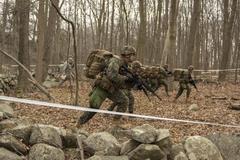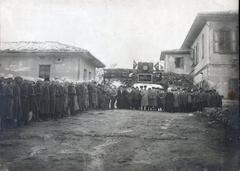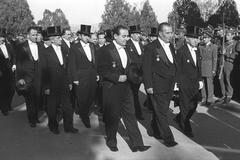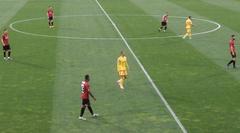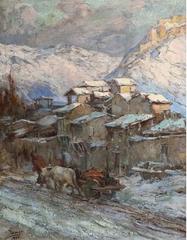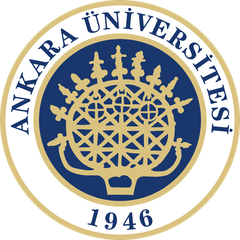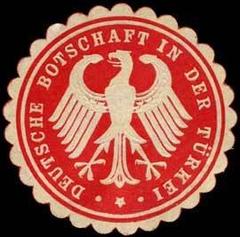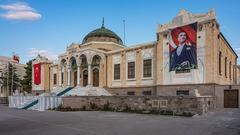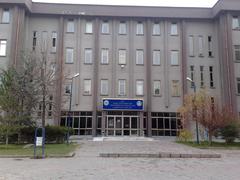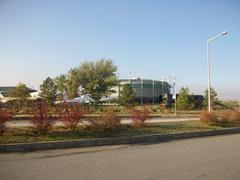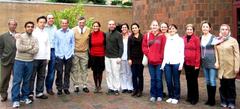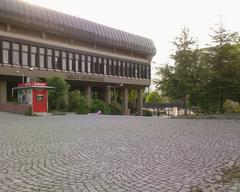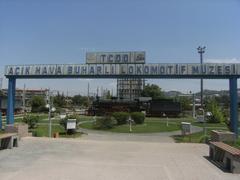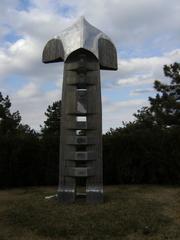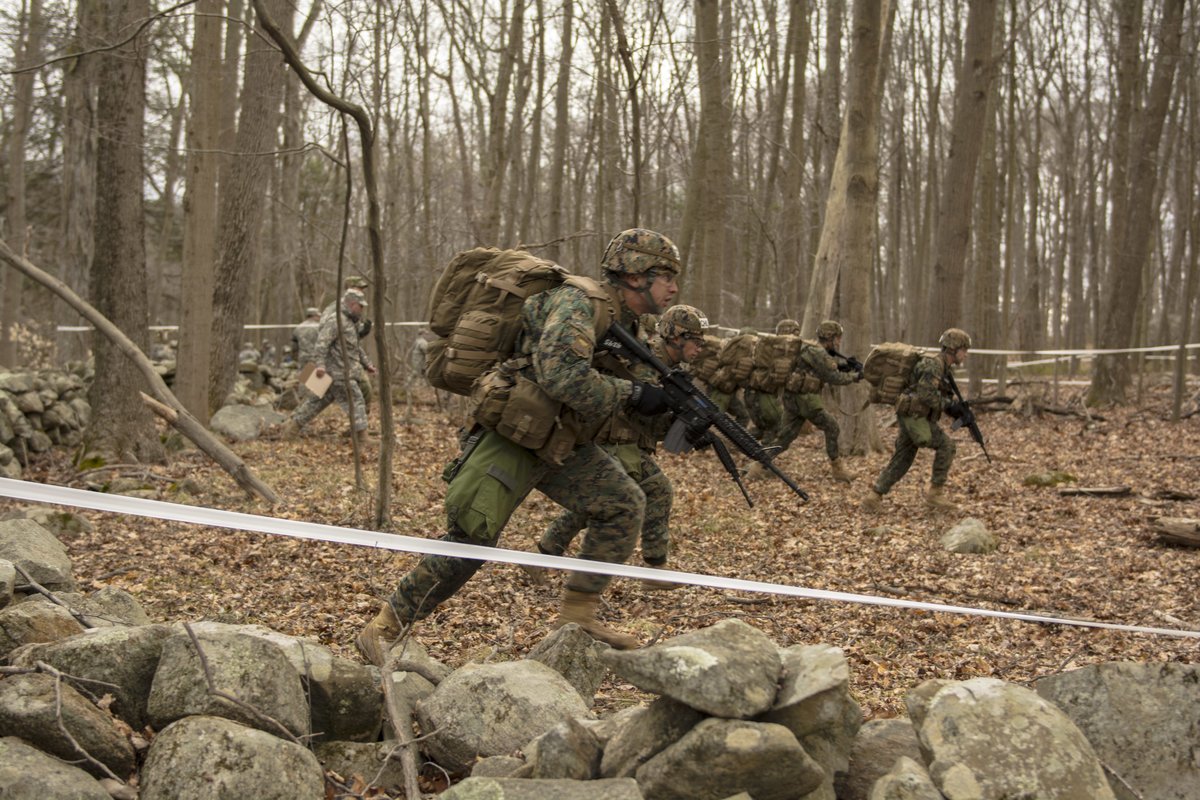
Turkish Military Academy Ankara: Visiting Hours, Tickets, and Travel Guide
Date: 14/06/2025
Introduction
The Turkish Military Academy (Kara Harp Okulu, also known as Harbiye) is a cornerstone of Turkey’s military education and national heritage. Founded in 1834 during the Ottoman Empire’s modernization efforts, the Academy has evolved through the Ottoman era, the Turkish War of Independence, and into its present role as part of the National Defence University in Ankara. While public access is tightly controlled due to its active military function, the Academy remains a site of deep historical and cultural significance for visitors interested in military history, leadership, and Turkish culture.
This comprehensive guide covers the Academy’s rich history, campus organization, academic programs, strict visitor protocols, and practical travel advice. It also explores nearby Ankara landmarks such as Anıtkabir and the Museum of Anatolian Civilizations, ensuring a rewarding experience for those able to arrange a visit.
For official visitor details, visiting hours, and tour arrangements, it is essential to consult the National Defence University website and the Turkish Land Forces official site. Additional insights can be gained from online virtual tours and multimedia galleries (source 1, source 2, source 3).
Table of Contents
- Introduction
- Historical Overview and Evolution
- Visiting the Turkish Military Academy
- Campus Layout, Facilities, and Cadet Life
- International Cadet Program
- Nearby Attractions in Ankara
- Practical Tips and Cultural Etiquette
- Frequently Asked Questions (FAQs)
- Visual and Interactive Resources
- Conclusion
- References
Historical Overview and Evolution
Founding and Early Years (1834–1908)
Established in Istanbul in 1834 by Sultan Mahmut II as part of the Ottoman Empire’s modernization drive, the Turkish Military Academy was modeled after European military schools and became the empire’s principal institution for training artillery and cavalry officers. The first graduates completed their studies in 1841, and the curriculum expanded over the years to include military high schools that prepared cadets for Academy entry (source 1).
Late Ottoman Period and War of Independence (1908–1923)
The Academy adapted to tumultuous times, producing officers who served in the Balkan Wars and World War I. In 1920, during the Turkish War of Independence, the Academy relocated to Ankara and resumed education at the Abidin Pasha Mansion. Mustafa Kemal Atatürk, a graduate himself, recognized the first Ankara class as the “first officers of independence.” In 1936, the Academy moved permanently to Ankara, aligning with the new Republic’s values.
Republican Era and Modernization (1923–Present)
Post-1923, the Academy became the main training ground for Turkish Army officers. Over decades, the curriculum has been modernized to include engineering, social sciences, and military strategy, reflecting Turkey’s role in NATO and regional security. Since its integration into the National Defence University in 2016, the Academy offers a five-year program combining academic and military instruction, commissioning graduates as second lieutenants (source 1, source 2).
Visiting the Turkish Military Academy
Visitor Access and Security Protocols
The Turkish Military Academy is an active military facility. Public access is strictly regulated and generally limited to special open days (such as national holidays), formal group visits, or by prior appointment. All visitors must obtain advance permission, submit personal details, and clear security screening. Photographic equipment and electronic devices are subject to inspection, and photography is only allowed in designated areas (travel.gc.ca).
Visiting Hours and Ticket Information
- Open Days: Typically coincide with national holidays (e.g., Victory Day, Republic Day), usually from 09:00 to 16:00.
- Tickets: No regular ticket sales; access is generally free during public events, but pre-registration and formal approval are required.
- Booking: Submit requests via the Turkish Land Forces official website, including ID details and purpose of visit. Academic and diplomatic groups may arrange visits by formal request.
Accessibility
The campus can accommodate visitors with mobility needs during organized tours, but some areas may be inaccessible. Notify hosts in advance if special assistance is required.
Special Events and Exhibitions
During open days and ceremonies, visitors may witness parades, exhibitions, and commemorative events. These occasions offer rare insight into cadet traditions and the Academy’s heritage.
Campus Layout, Facilities, and Cadet Life
The Academy’s secure campus balances academic excellence with military discipline. Four battalions—Anafartalar, Dumlupinar, Sakarya, Malazgirt—are named after key campaigns, each with barracks, classrooms, dining halls, and study areas (military-history.fandom.com).
Facilities include:
- The “13 March” building, named for Atatürk’s entry date, housing the main library
- Simulation centers for tactical training
- Physical training complexes and sports fields
- Drill halls and language labs
- Museum and archives preserving nearly two centuries of history
About 4,000 cadets live on campus. Daily routines blend academic classes, physical training, and military instruction. Cadets wear uniforms at all times, with insignia denoting year and specialty. Meals are shared in battalion dining halls, reinforcing camaraderie and discipline.
International Cadet Program
Each year, the Academy welcomes cadets from around 18 allied and friendly nations. These international cadets follow the same rigorous four-year program, enriching campus culture and fostering global military cooperation (kho.msu.edu.tr).
Nearby Attractions in Ankara
Even if access to the Academy is not possible, Ankara offers numerous related sites to explore:
- Anıtkabir: Mausoleum of Mustafa Kemal Atatürk, a must-see for its military and national symbolism.
- Museum of Anatolian Civilizations: Showcasing Turkey’s archaeological heritage.
- Museum of the War of Independence: Detailing the struggle for modern Turkey.
- Ankara Castle: A panoramic viewpoint and historical fortress.
- Ethnography Museum of Ankara: Offering insights into Turkish cultural traditions.
These sites are easily accessible by taxi or public transportation from the Academy’s district.
Practical Tips and Cultural Etiquette
Advance Planning
- Contact the Academy or Ministry of National Defense well before your intended visit.
- Be prepared to submit personal identification and await approval.
Dress Code
- Men: Long trousers, collared shirts; avoid shorts and sleeveless tops.
- Women: Modest dresses/skirts; shoulders covered. Headscarves optional but appreciated at ceremonies.
- Footwear: Closed-toe shoes; sandals discouraged. (Rough Guides)
Behavior and Protocols
- Address officers with titles (“Bey” or “Hanım”).
- Stand during the national anthem and when senior officers enter.
- Do not photograph unless explicitly permitted.
- Devices must be silent; follow all posted rules. (Cultural Atlas, Find Your Editor)
Security and Identification
- Carry your passport or Turkish ID at all times.
- Expect security screening and bag checks.
- Prohibited items include weapons, large bags, and unauthorized electronics.
Frequently Asked Questions (FAQs)
Q: Can tourists visit the Turkish Military Academy?
A: Public access is highly restricted. Visits are generally allowed only during open days or by official invitation.
Q: How do I book a tour?
A: Contact the Academy or Turkish Land Forces via their official website well in advance.
Q: Are tickets required?
A: No general ticket sales exist. Visits are free during special events but require pre-registration and approval.
Q: Is photography allowed?
A: Only in designated areas with explicit permission.
Q: What is the dress code?
A: Modest, respectful attire is mandatory for all visitors.
Visual and Interactive Resources
Explore virtual tours, galleries, and maps on the National Defence University website and Turkish Land Forces site. These resources offer visual context and help you prepare for your visit.
Conclusion
The Turkish Military Academy stands as a symbol of Turkey’s military heritage and national pride. While access is limited, those able to attend special events or official tours will witness a living tradition of discipline, leadership, and service. For the latest information, always consult the National Defence University and Turkish Land Forces websites. Combine your visit with Ankara’s historic sites for a comprehensive cultural experience, and consider using the Audiala app for personalized travel tips and updates.
By respecting the Academy’s strict protocols and appreciating its significance, visitors can enjoy a unique and insightful experience that connects them with Turkey’s past and present military excellence (source 1, source 2, source 3).
References
- National Defence University: History of the Turkish Military Academy
- Turkish Land Forces Official Website
- Turkish Military Academy - Military History Fandom
- Travel.gc.ca - Turkey Travel Advisory
- Rough Guides - Turkey Customs and Etiquette
- Cultural Atlas - Turkish Culture Etiquette
- Find Your Editor - Turkish Etiquette
